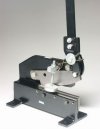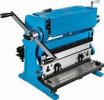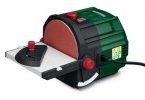JimG
Western Thunderer
I've been watching this discussion about the brass wagon floors and I think I would go for cutting them on a milling machine - either vertical or horizontal. This means that the sizes can be accurate and repeatable especially if the machine is CNC controlled. I would also use engraving brass which is flat. I get my brass sheet from Ian Cobb and it is flat. Ian Cobb cuts his sheets with a bandsaw so no distortions from guillotining.
Ian Cobb Brass Sheet
Unfortunately he is out of 1mm sheet at the moment.
I also note that you can also get laser cutting of brass - e.g....
Laser Cutting
...although I don't know what the finish of the edges might be compared to the machined quality from a milling machine.
Jim.
Ian Cobb Brass Sheet
Unfortunately he is out of 1mm sheet at the moment.
I also note that you can also get laser cutting of brass - e.g....
Laser Cutting
...although I don't know what the finish of the edges might be compared to the machined quality from a milling machine.
Jim.



